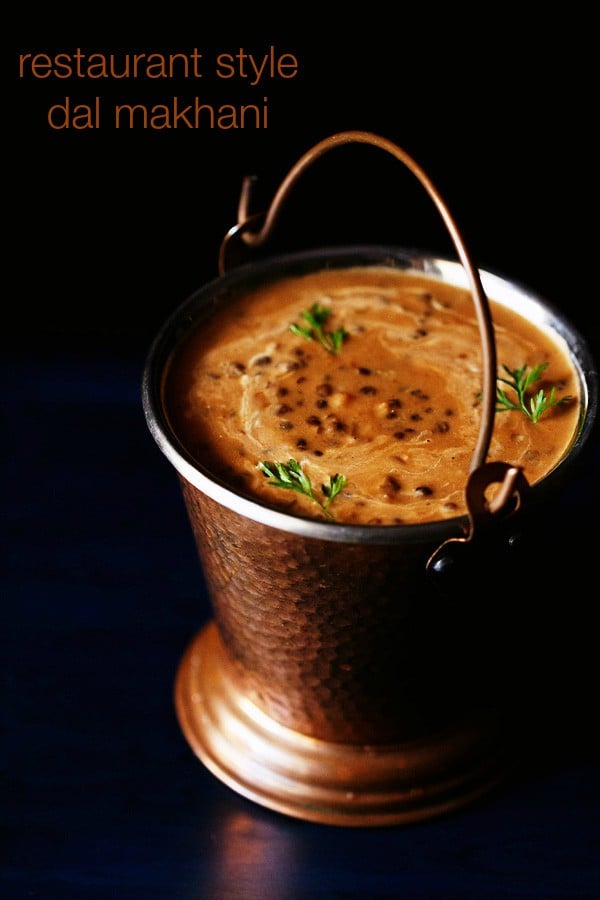
Dal Makhani is one of the most popular lentil recipes from the North Indian Punjabi cuisine made with Whole Black Lentils (known as Urad dal or Kaali Dal in Hindi) and Kidney Beans (known as Rajma in Hindi).
For this recipe, I have used a pressure cooker to cook the lentils, but I have explained the method of cooking the lentils in a pan or pot in the notes section of the recipe card.
I have also shared my expert tips and frequently asked questions by our readers on this recipe below. In the FAQ section below, I also share the method of making this dal makhani in the Instant Pot.
Why this recipe works
Before I list out and explain to you the beauty of this recipe, let me tell you that this Dal Makhani recipe is one of our most reviewed and loved recipe on the blog.
It has been made by many of our readers and they have loved it. It also happens to be my most shared recipe on social media.
So what makes this reipe so good and why is it one of the best Dal Makhani recipe.
Whole spices
Fragrant and aromatic whole spices make this Dal Makhani more flavorful.
In my experimentation with this dish earlier, I remember making dal makhani without whole spices many times and hoping to get restaurant like taste and flavors in the lentils. But it never matched and my experiments continued.
When we were residing in Goa, we used to have dal makhani in a restaurant (and it was one of their best dish) at the quiet and serene Benaulim beach.
I once found a black cardamom and clove in their dal makhni. I thought may be it is the black cardamom and clove giving that lovely aroma and flavor.
Thereafter I tested dal makhani many times adding whole spices and realized that they do add a good flavor and faint aroma to the dish. But I still felt something was lacking.
Butter and cream
Cream and butter make a big difference.
Thus I kept on experimenting and when I was testing the recipe of Dal Bukhara, I realized it was the cream and butter giving a rich taste, apart from the slow cooking.
The richness in the dish comes from the fats in the butter and cream. The amount of butter and cream added is not copious and just enough to lift the dish in its richness.
You could still make dal makhani with less butter and cream. Just remember to slow cook it for longer periods of time, to get the real deal.
Slow cooking
The more slow cooked dal makhani is the better it tastes.
In most Indian restaurants specializing in authentic North Indian food, Dal Makhani is simmered overnight or for many hours.
Basically you can call it slow cooking of the lentils. This slow cooking makes a world of difference to the consistency of the lentils.
The lentils are slow cooked in a tandoor. The tandoor is a cylindrical shaped oven made of clay. The fire in the tandoor comes from lit charcoal or wood.
Overnight simmering of the dal makhani gives some smokiness in the dish from the charcoal or wood.
In most Indian homes you will not find tandoor. But you will easily find a pressure cooker.
The fastest way to cook the lentils are in a pressure cooker. In this post, I have used a stove-top pressure cooker, but you can cook the lentils in an Instant Pot too.
I have cooked the lentils & beans in a pressure cooker for about 30 minutes. Later I have slow cooked them on a low heat for 25 minutes.
You can slow cook for more time than what I have done. Slow cooking makes the lentils viscous, creamy and the end result is a finger-licking dal makhani.
Smoky flavors
For that restaurant style taste smoky aroma and flavor is the key.
Like I mentioned above the smoky aroma in the dal makhani comes from slow simmering and cooking dal makhani on wooden or charcoal fires or embers.
To replicate this smokiness in the dish, I have two tried and tested methods for you.
- Charcoal infused smoke: This is also called as Dhungar in Hindi language. It is a charcoal smoking technique. It works fabulously for any recipe where you need some smoky flavor.
The dal makhani smoked with this method tastes exactly like the restaurant one. The dhungar smoking technique is optional and you can just skip if you cannot get charcoal. - Use smoked paprika: Using smoked paprika is the easiest method and especially great when you cannot get charcoal.
Just replace the red chilli powder in the recipe with smoked paprika. I have added smoked paprika so many times to dal makhani to get that smoky flavor.
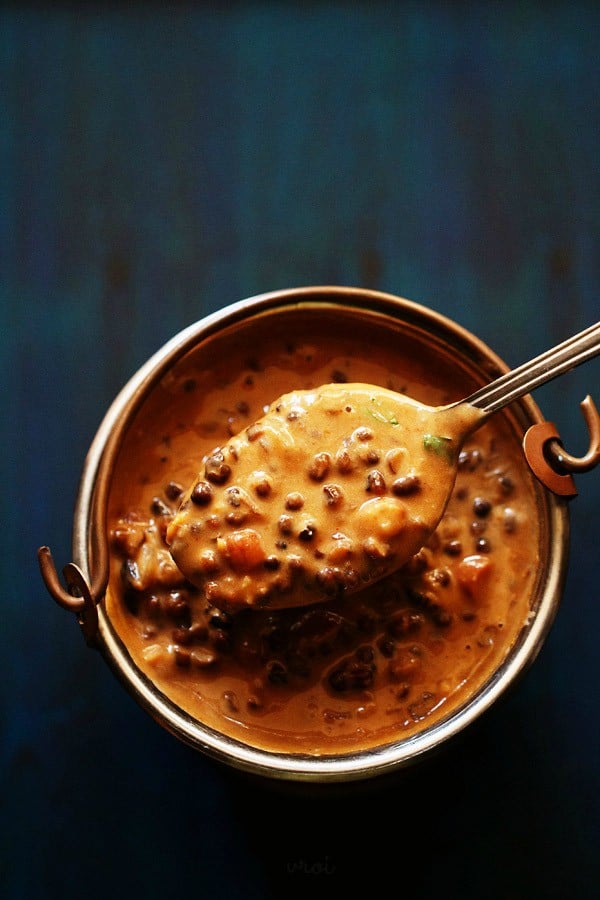
Two more similar Punjabi recipes that you can make with black gram are Kaali Dal (Punjabi maah ki dal) and Amritsari Dal (langarwali dal).
How to make Dal Makhani
Soaking lentils
1. Soak both ¾ cup whole urad dal (whole black gram) and ¼ cup rajma (kidney beans) overnight in enough water for 8 to 9 hours. Drain them well. The below photo shows the soaked whole urad dal and rajma.
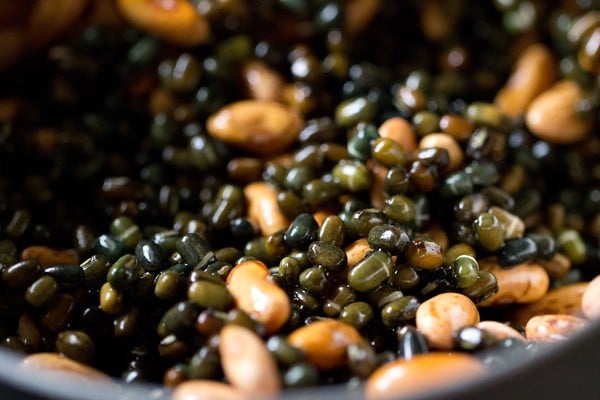
2. Rinse the urad lentils and rajma legumes a couple of times in water.
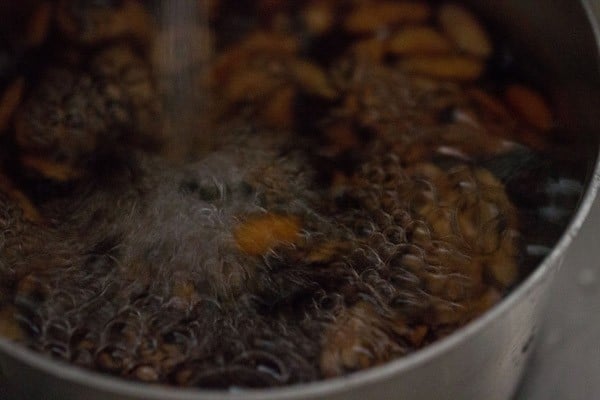
3. Drain well and then add them in a 3 litre pressure cooker.
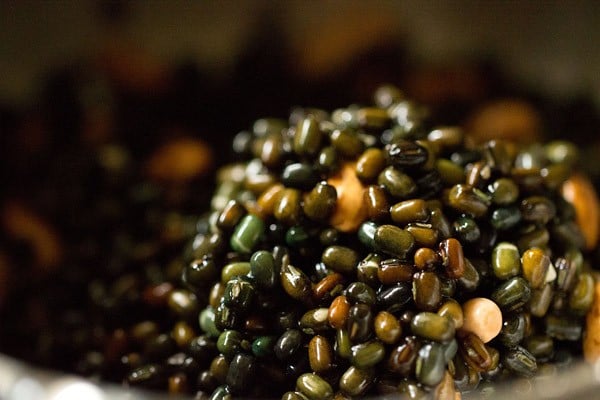
4. Add 3 cups water and stir well.
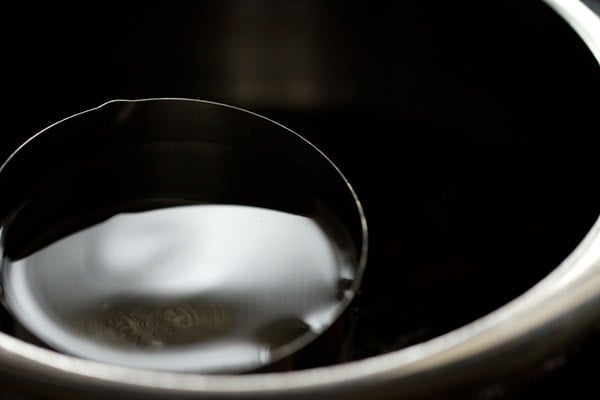
5. Pressure cook for 18 to 20 whistles on a high flame, till both the whole urad dal and rajma have cooked thoroughly and softened. If they are not cooked, then add about ½ cup water again and pressure cook for 4 to 5 whistles more.
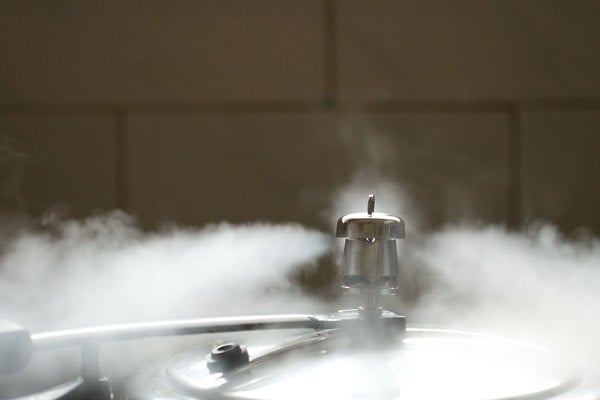
6. In the below photo, both the rajma and urad dal are cooked and softened well. The urad dal should melt in the mouth and should not give any bite or resistance when eaten.
You can also just mash the urad dal with a spoon or with your fingers to check the doneness. The same rule applies for kidney beans too.
Keep the cooked beans aside. Both the urad dal and kidney beans have to be fresh. If they are old or close to their expiry, they take a lot of time to cook.
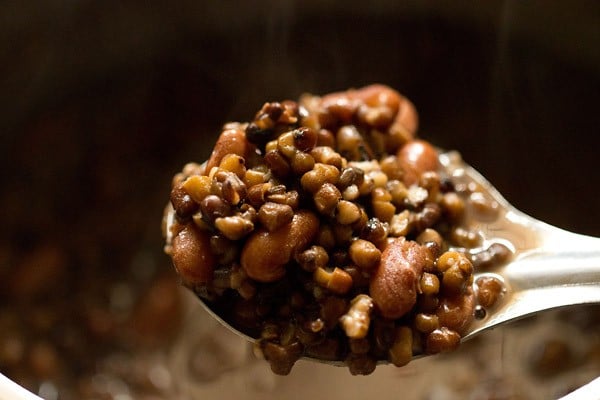
7. In a blender or mixer jar, take chopped tomatoes. 2 large tomatoes or 200 grams of tomatoes, chopped. No need to blanch the tomatoes.
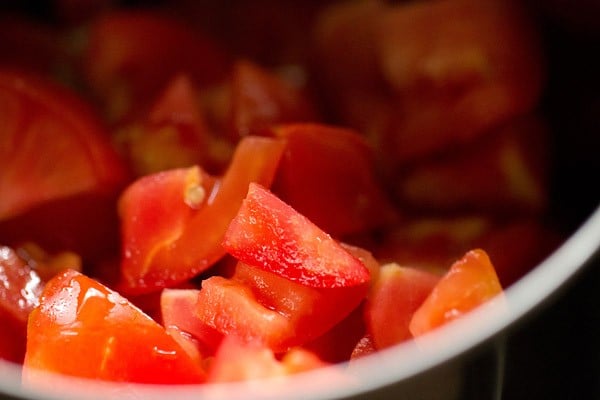
8. Blend to a smooth puree. Keep aside. You can also use the store brought 1 cup tomato puree instead of blending the tomatoes.
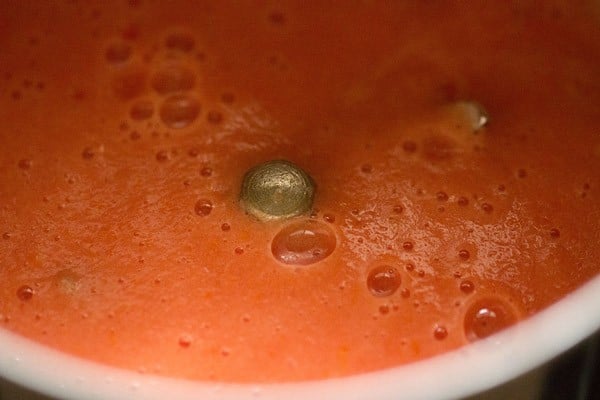
Making dal makhani
9. In a pan, now heat 3 tablespoons butter. You can use salted butter or unsalted butter.
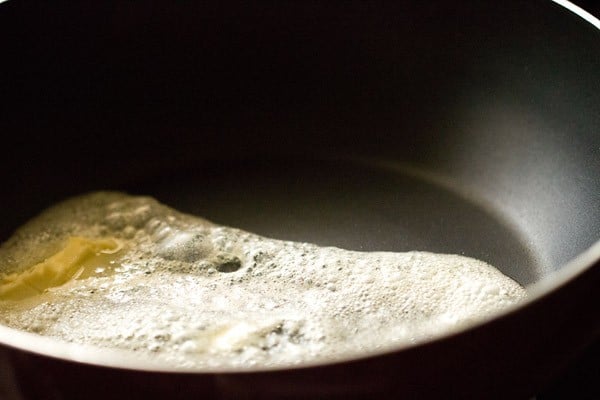
10. Add the whole spices – ½ tsp cumin seeds, 2 to 3 cloves, 2 to 3 green cardamoms, 1 black cardamom, 1 inch cinnamon, 1 small to medium tej patta (Indian bay leaf). Fry till the spices become aromatic and sputter.
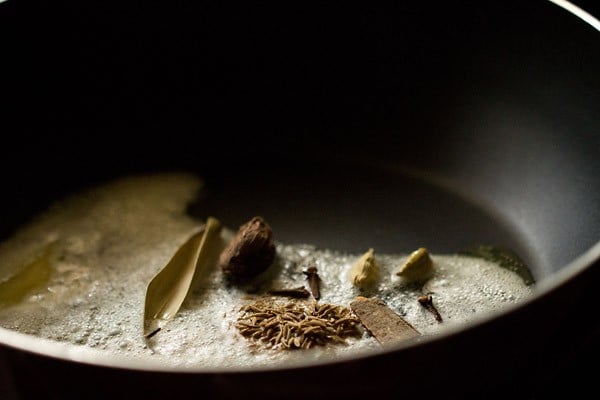
11. Then add ½ cup finely chopped onions.
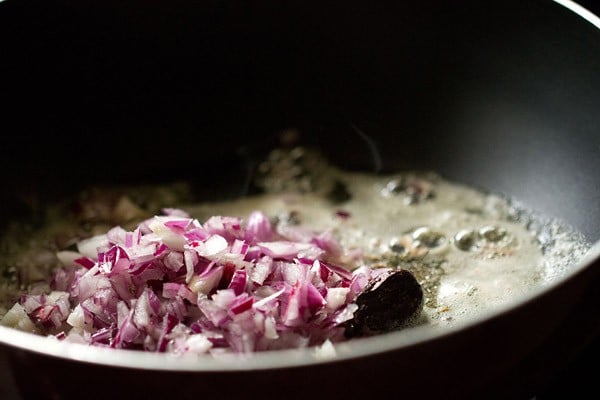
12. Stir and saute the onions on a low flame often.
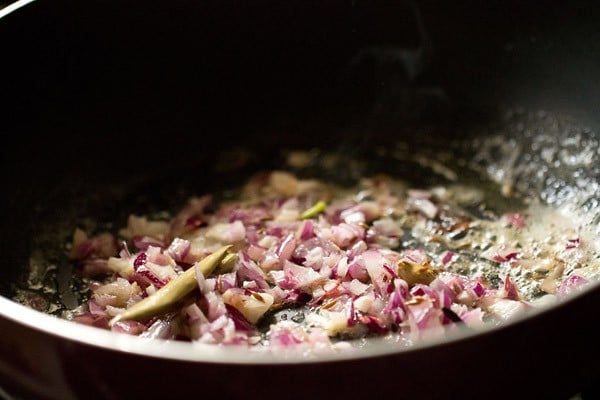
13. Saute the onions till they become light golden.
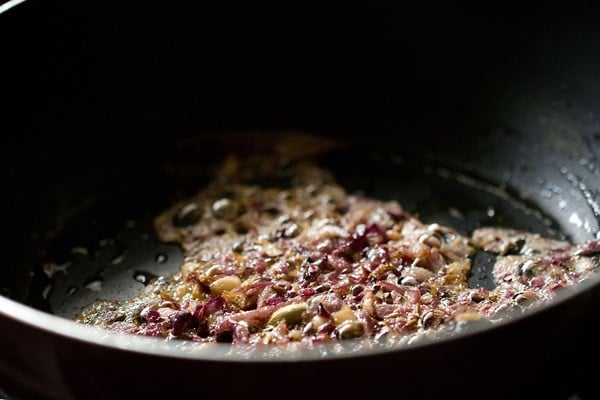
14. Then add 2 teaspoons ginger-garlic paste. Stir again and sauté till the raw aroma of ginger-garlic goes away.
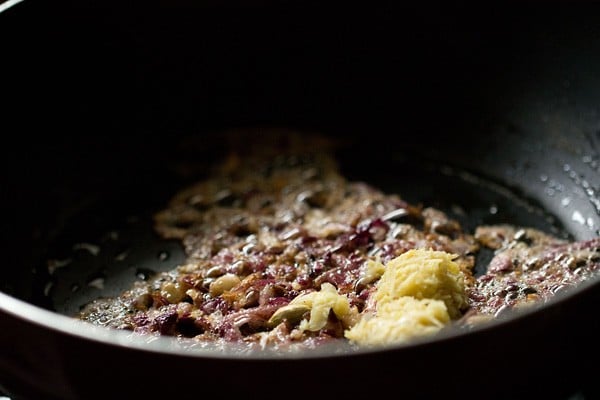
15. Add 1 teaspoon chopped green chilies and stir for a minute.
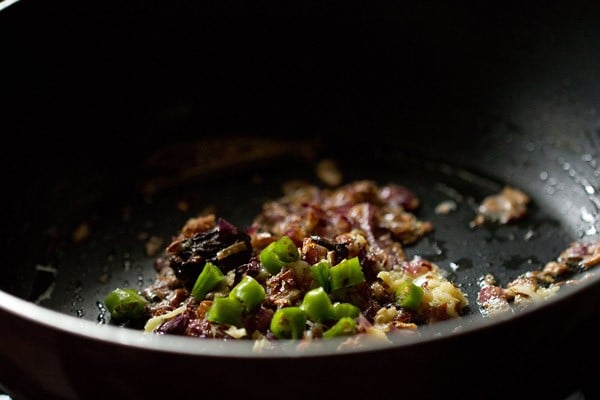
16. Then add the prepared tomato puree.
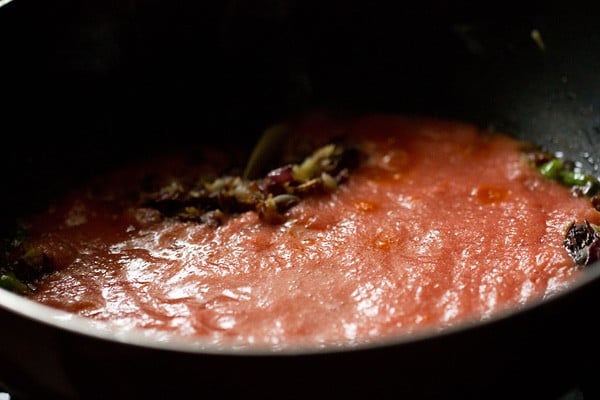
17. Mix again.
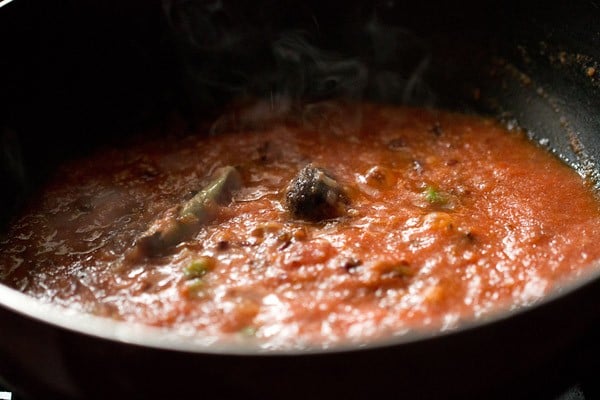
18. Add ½ teaspoon red chili powder.
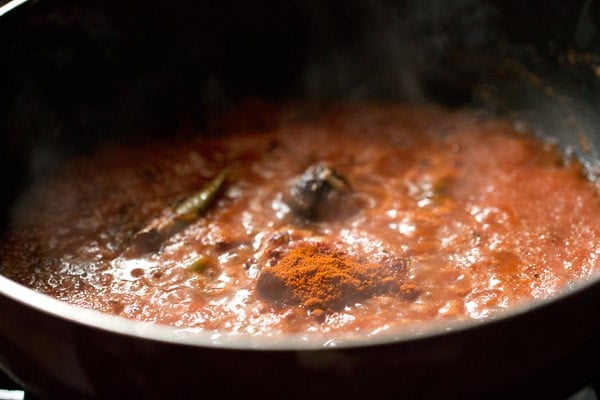
19. Then add about 2 to 3 pinches of grated nutmeg or nutmeg powder.
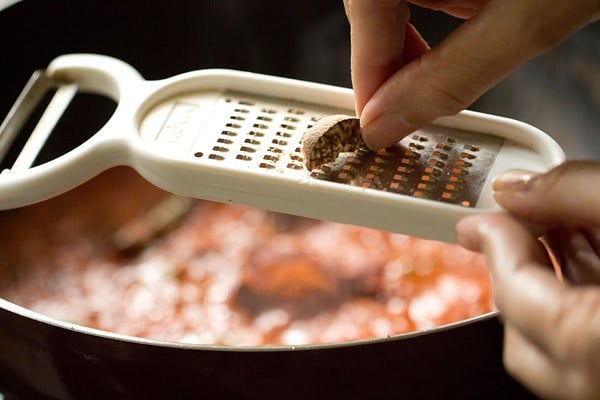
20. Mix very well and sauté this mixture on a low to medium heat, till you see fat releasing from the sides. This takes about 3 to 4 minutes on a medium-low to medium heat.
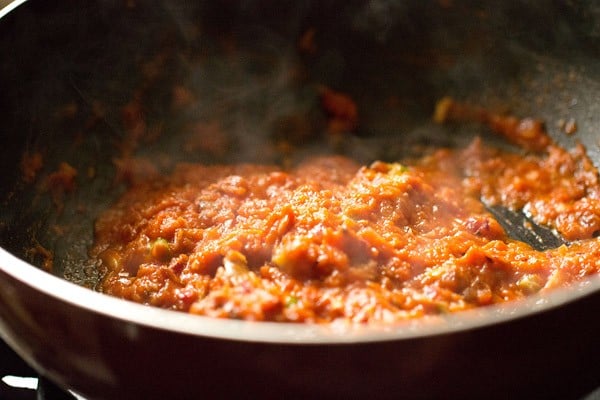
21. Then add the cooked urad dal and rajma beans.
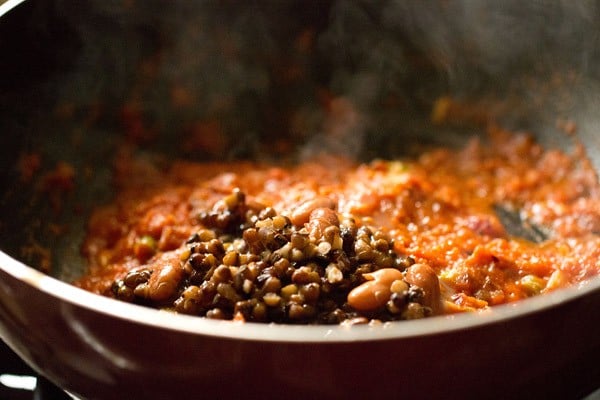
22. Add the remaining stock. Add 1 cup water or more if required.
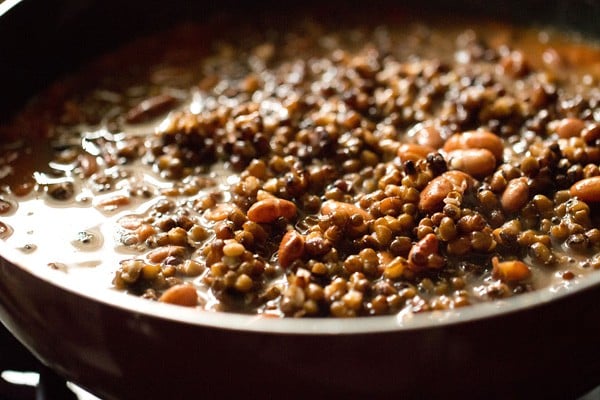
Slow cooking
23. Mix very well and simmer the dal uncovered on a low heat.
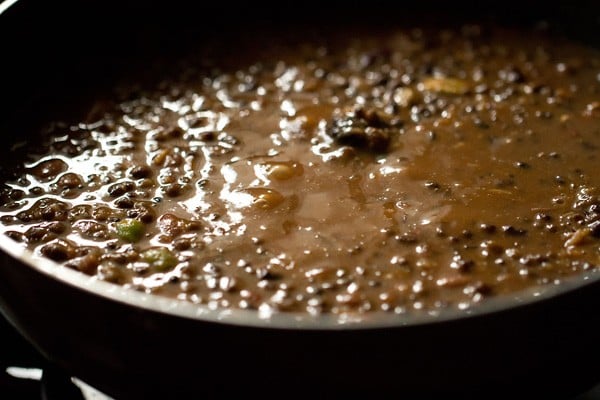
24. Keep on stirring often, so that the lentils don’t get stuck to the bottom of the pan. The lentils become viscous and start to stick at the bottom if not stirred. Mash a few lentils too while stirring.
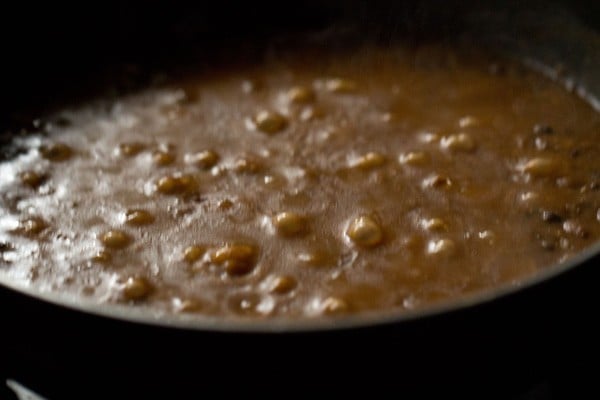
25. Once the dal makhani has begun to thicken, add salt as required.
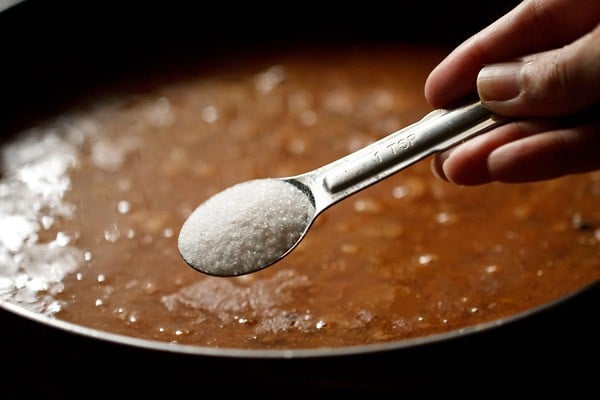
26. Mix very well and continue to simmer on a low heat. Keep on stirring when the lentils are simmered on low heat. When simmering you can add more water if the consistency looks thick or dry.
The longer you keep dal makhni to simmer, the better it tastes. The lentils become creamy, viscous and the consistency of the dal will keep on thickening as you simmer.
I kept for about an overall 25 minutes on a low flame. Do keep on stirring at intervals.
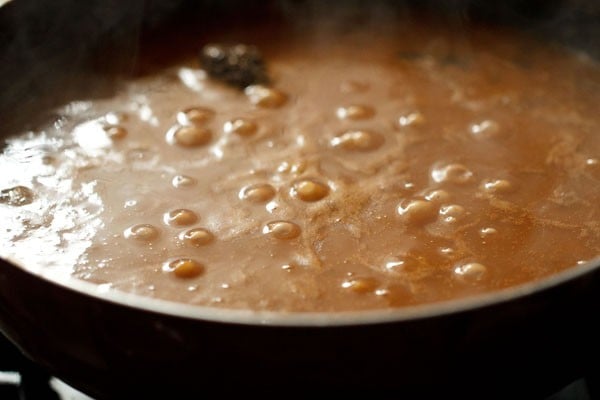
27. When the gravy has thickened enough, then add ¼ to ⅓ cup low fat cream or half and half. If using heavy cream, then add 2 tablespoons of it.
The consistency of Punjabi dal makhani is neither too thick or too thin. It has a medium consistency with a viscosity coming from the thoroughly cooked lentils.
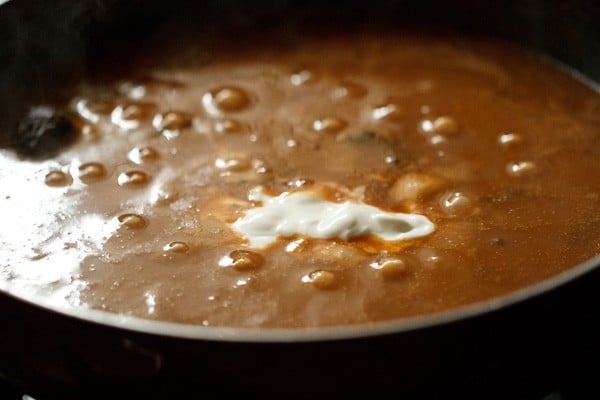
28. Mix the cream very well. Then switch off the heat.
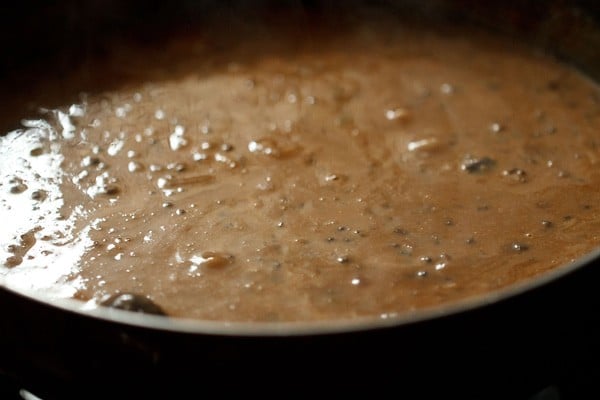
29. Now add ¼ teaspoon kasuri methi, crushed. Stir again. Cover and keep the dal makhani aside, if you are proceeding to the dhungar method. Or else you can serve Punjabi dal makhani straight away.
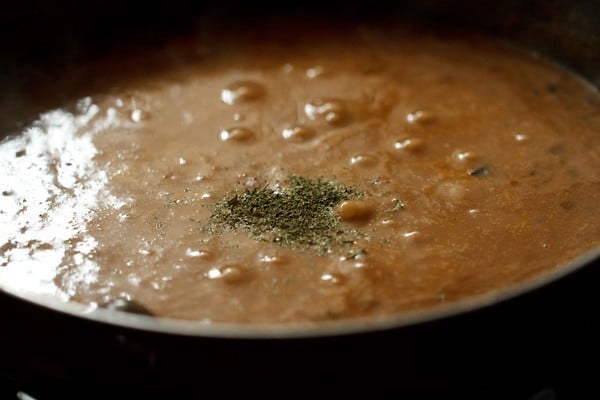
Optional – charcoal smoking or dhungar method
30. Heat a small piece of charcoal on flame till it becomes red hot. With the help of tongs, keep on turning the charcoal piece so that it evenly burns.
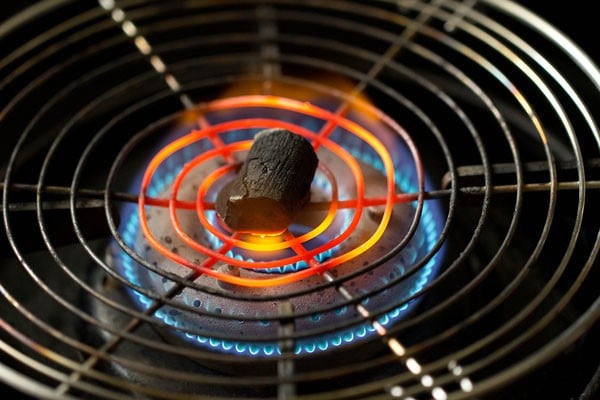
31. Keep the red hot charcoal in a small bowl.
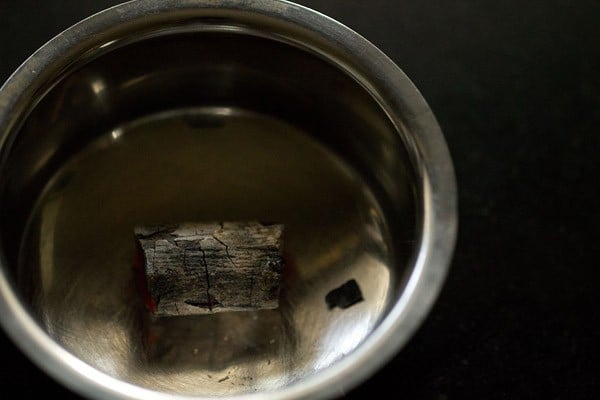
32. Pour ½ to ⅔ teaspoon oil on the charcoal. The hot piece of charcoal would begin to smoke as soon as you pour oil on it.
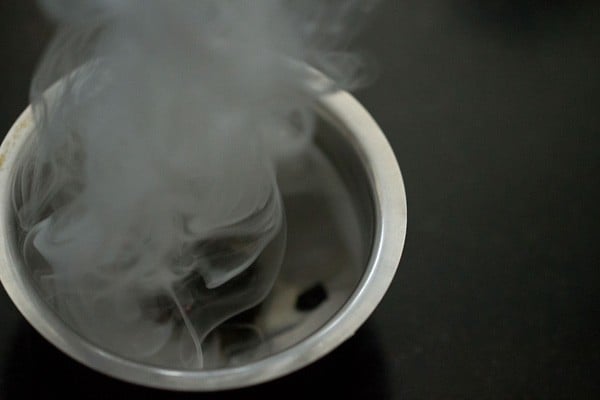
33. Immediately keep this bowl on top of the dal.
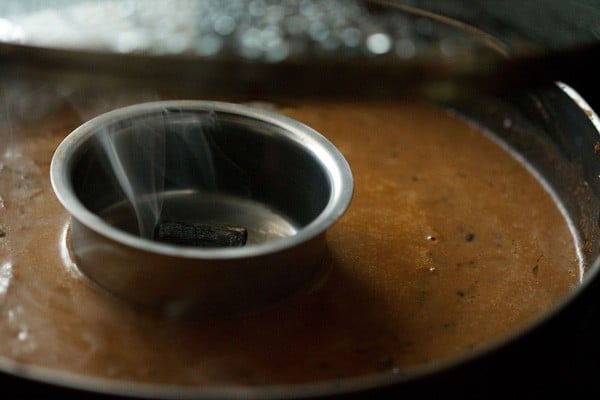
34. Cover with a lid tightly for one minute and allow the charcoal to infuse its smoke in the dal makhani. I usually keep for one minute.
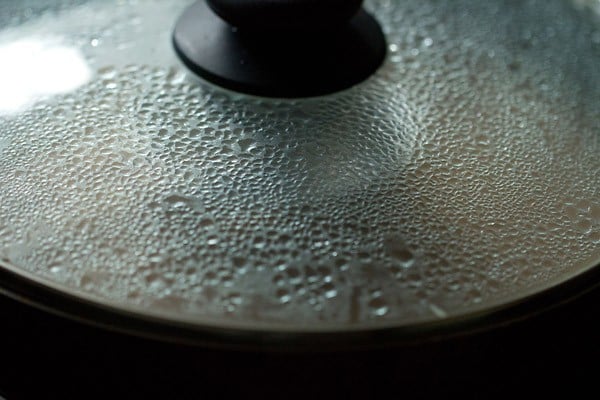
35. Stir again. Serve Punjabi dal makhani garnished with chopped coriander leaves and a few teaspoons of cream with naan, tandoori roti, paratha, kulcha, phulka or aloo paratha or steamed rice.
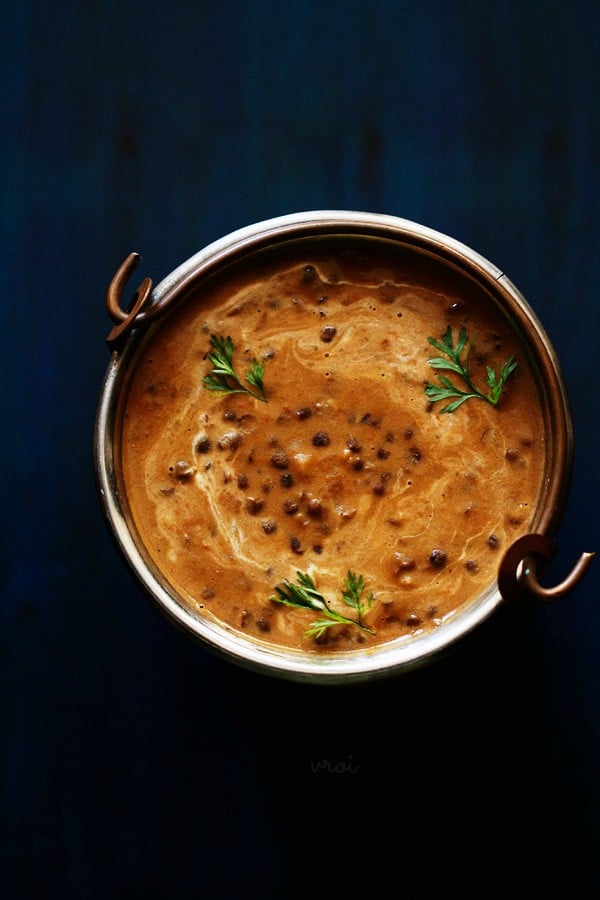
No comments:
Post a Comment